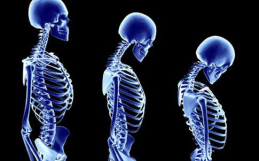Making Your Heart 20 Years Younger
This study really caught my eye because I have a significant family history of fatal heart disease. My father, despite being physically active until his late 30s, passed away at 63 from a fatal heart attack.
The Reality of Heart Disease
- In Canada, ischemic heart disease caused 120,315 deaths in the fiscal year 2021-2022 among those aged 20 years and older.
- Fatal heart attack or acute myocardial infarction, a type of heart disease, resulted in 46,670 deaths during the same period.
- Heart disease was the second leading cause of death in Canada in 2021, accounting for 17.7% of all deaths.
The Link Between Fitness and Heart Aging
Poor fitness in middle age (35-50 years old) is a strong predictor of future heart failure due to heart stiffness. However, waiting until heart failure develops or aging further only cements the effects of a sedentary lifestyle.
Dr. Ben Levine, one of the world’s leading experts on heart aging and exercise, has extensively studied how the structure of the heart changes with age and how lifestyle choices impact heart health.
For a deep dive into his research, check out Dr. Rhonda Patrick’s interview with Dr. Levine, where they discuss his findings and their practical applications.
Understanding Heart Aging: The Rubber Band Analogy
A great way to visualize heart aging is through Dr. Patrick’s rubber band analogy:
- Imagine a brand-new rubber band—it’s stretchy and flexible.
- If you leave it in a drawer for several years, it becomes stiff and loses elasticity.
- This is exactly what happens to your heart if it isn’t exposed to regular physical activity.
The ability of the heart to stretch and accommodate blood flow is known as compliance—a strong marker of a youthful cardiovascular system.
Why Does the Heart Become Stiff?
As we enter middle age, the heart naturally stiffens, affecting blood pressure and overall performance. Diet plays a crucial role, especially when it comes to sugar (glucose):
- A diet high in carbohydrates can keep blood sugar levels elevated, especially in sedentary individuals.
- Elevated glucose levels react with proteins like collagen in our blood vessels and heart muscle, leading to a process called the Maillard reaction, which stiffens the heart and blood vessels.
- By late middle age (50-65 years old), the heart begins to shrink (atrophy), further worsening performance.
Can We Reverse Heart Aging?
Yes! Dr. Ben Levine’s research has shown that specific exercise protocols can reverse heart damage and reduce the risk of future heart failure.
A groundbreaking study found that following a specific exercise regimen for two years can reverse heart aging by up to 20 years.
This was the longest prospective randomized controlled trial to document the physiological effects of supervised, structured exercise training in sedentary but healthy middle-aged adults.
Key Findings of the Study
Participants who exercised for 30 minutes, 4-5 days per week, with at least one high-intensity session per week, showed:
- Significant reduction in heart chamber and myocardial stiffness
- Hearts that looked 20 years younger on various medical tests
- Improved overall cardiovascular function
To maximize benefits, it’s recommended to start before age 65, as the heart retains some ability to remodel itself until that point.
The Exercise “Prescription for Life”
Dr. Levine’s research led to the development of an exercise regimen designed to maintain heart health and reverse aging effects which he coined the name ‘Prescription for Life’:
- 4-5 weekly workouts, each lasting 30 minutes or more.
- One high-intensity session per week (e.g., 4×4 interval training, where heart rate reaches 95% of peak for 4 minutes, followed by 3 minutes of recovery, repeated 4 times).
- One longer session (1 hour) at moderate intensity—can include activities like tennis, dancing, walking, or biking.
- 1-2 moderate-intensity sessions (breaking a sweat but able to hold a conversation).
- 1-2 strength training sessions per week.
The Impact of Inactivity: Bed Rest vs. Aging
Dr. Levine found that three weeks of bed rest at age 20 was more detrimental to physical performance than 30 years of aging! This underscores the importance of staying active to maintain heart health.
Challenging Current Exercise Guidelines
Current Canadian exercise guidelines suggest 2.5 hours of moderate activity per week, but this may not be enough to fully optimize heart health. Dr. Levine’s research suggests more frequent and structured exercise is necessary to significantly improve cardiovascular aging.
Final Thoughts
If you’re looking for a science-backed way to make your heart 20 years younger, exercise should be as routine as brushing your teeth or cooking breakfast.
For more resources on how to train effectively, check out Dr. Rhonda Patrick’s How to Train Guide.
Happy training!
— Dr. Dan












